Delta Airlines 2003 Annual Report Download - page 43
Download and view the complete annual report
Please find page 43 of the 2003 Delta Airlines annual report below. You can navigate through the pages in the report by either clicking on the pages listed below, or by using the keyword search tool below to find specific information within the annual report.-
 1
1 -
 2
2 -
 3
3 -
 4
4 -
 5
5 -
 6
6 -
 7
7 -
 8
8 -
 9
9 -
 10
10 -
 11
11 -
 12
12 -
 13
13 -
 14
14 -
 15
15 -
 16
16 -
 17
17 -
 18
18 -
 19
19 -
 20
20 -
 21
21 -
 22
22 -
 23
23 -
 24
24 -
 25
25 -
 26
26 -
 27
27 -
 28
28 -
 29
29 -
 30
30 -
 31
31 -
 32
32 -
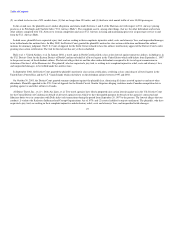 33
33 -
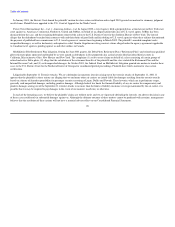 34
34 -
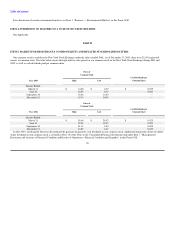 35
35 -
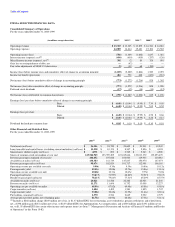 36
36 -
 37
37 -
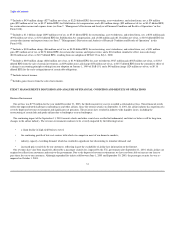 38
38 -
 39
39 -
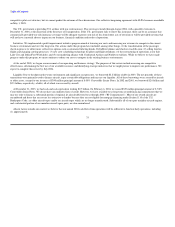 40
40 -
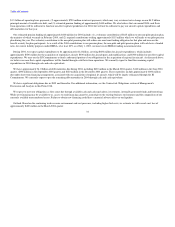 41
41 -
 42
42 -
 43
43 -
 44
44 -
 45
45 -
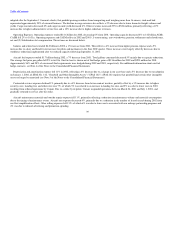 46
46 -
 47
47 -
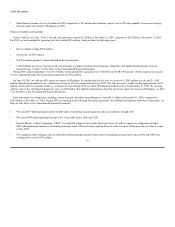 48
48 -
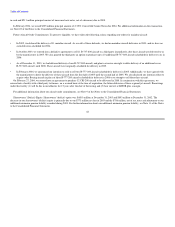 49
49 -
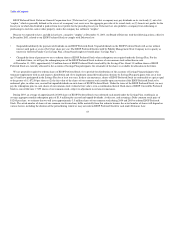 50
50 -
 51
51 -
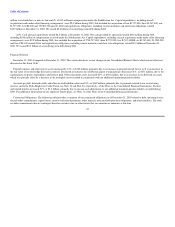 52
52 -
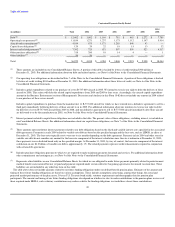 53
53 -
 54
54 -
 55
55 -
 56
56 -
 57
57 -
 58
58 -
 59
59 -
 60
60 -
 61
61 -
 62
62 -
 63
63 -
 64
64 -
 65
65 -
 66
66 -
 67
67 -
 68
68 -
 69
69 -
 70
70 -
 71
71 -
 72
72 -
 73
73 -
 74
74 -
 75
75 -
 76
76 -
 77
77 -
 78
78 -
 79
79 -
 80
80 -
 81
81 -
 82
82 -
 83
83 -
 84
84 -
 85
85 -
 86
86 -
 87
87 -
 88
88 -
 89
89 -
 90
90 -
 91
91 -
 92
92 -
 93
93 -
 94
94 -
 95
95 -
 96
96 -
 97
97 -
 98
98 -
 99
99 -
 100
100 -
 101
101 -
 102
102 -
 103
103 -
 104
104 -
 105
105 -
 106
106 -
 107
107 -
 108
108 -
 109
109 -
 110
110 -
 111
111 -
 112
112 -
 113
113 -
 114
114 -
 115
115 -
 116
116 -
 117
117 -
 118
118 -
 119
119 -
 120
120 -
 121
121 -
 122
122 -
 123
123 -
 124
124 -
 125
125 -
 126
126 -
 127
127 -
 128
128 -
 129
129 -
 130
130 -
 131
131 -
 132
132 -
 133
133 -
 134
134 -
 135
135 -
 136
136 -
 137
137 -
 138
138 -
 139
139 -
 140
140 -
 141
141 -
 142
142 -
 143
143 -
 144
144 -
 145
145 -
 146
146 -
 147
147 -
 148
148 -
 149
149 -
 150
150 -
 151
151 -
 152
152 -
 153
153 -
 154
154 -
 155
155 -
 156
156 -
 157
157 -
 158
158 -
 159
159 -
 160
160 -
 161
161 -
 162
162 -
 163
163 -
 164
164 -
 165
165 -
 166
166 -
 167
167 -
 168
168 -
 169
169 -
 170
170 -
 171
171 -
 172
172 -
 173
173 -
 174
174 -
 175
175 -
 176
176 -
 177
177 -
 178
178 -
 179
179 -
 180
180 -
 181
181 -
 182
182 -
 183
183 -
 184
184 -
 185
185 -
 186
186 -
 187
187 -
 188
188 -
 189
189 -
 190
190 -
 191
191 -
 192
192 -
 193
193 -
 194
194 -
 195
195 -
 196
196 -
 197
197 -
 198
198 -
 199
199 -
 200
200 -
 201
201 -
 202
202 -
 203
203 -
 204
204 -
 205
205 -
 206
206 -
 207
207 -
 208
208 -
 209
209 -
 210
210 -
 211
211 -
 212
212 -
 213
213 -
 214
214 -
 215
215 -
 216
216 -
 217
217 -
 218
218 -
 219
219 -
 220
220 -
 221
221 -
 222
222 -
 223
223 -
 224
224 -
 225
225 -
 226
226 -
 227
227 -
 228
228 -
 229
229 -
 230
230 -
 231
231 -
 232
232 -
 233
233 -
 234
234 -
 235
235 -
 236
236 -
 237
237 -
 238
238 -
 239
239 -
 240
240 -
 241
241 -
 242
242 -
 243
243 -
 244
244 -
 245
245 -
 246
246 -
 247
247 -
 248
248 -
 249
249 -
 250
250 -
 251
251 -
 252
252 -
 253
253 -
 254
254 -
 255
255 -
 256
256 -
 257
257 -
 258
258 -
 259
259 -
 260
260 -
 261
261 -
 262
262 -
 263
263 -
 264
264 -
 265
265 -
 266
266 -
 267
267 -
 268
268 -
 269
269 -
 270
270 -
 271
271 -
 272
272 -
 273
273 -
 274
274 -
 275
275 -
 276
276 -
 277
277 -
 278
278 -
 279
279 -
 280
280 -
 281
281 -
 282
282 -
 283
283 -
 284
284 -
 285
285 -
 286
286 -
 287
287 -
 288
288 -
 289
289 -
 290
290 -
 291
291 -
 292
292 -
 293
293 -
 294
294 -
 295
295 -
 296
296 -
 297
297 -
 298
298 -
 299
299 -
 300
300 -
 301
301 -
 302
302 -
 303
303 -
 304
304
 |
 |

Table of Contents
to our 2002 workforce reduction programs. The increase in pension expense mainly reflects the impact of declining interest rates, a decrease in the fair value
of pension plan assets and scheduled pilot salary increases, partially offset by approximately $120 million in expense reductions from the transition of our
non-pilot defined benefit pension plan to a cash balance plan. For additional information related to this transition, see Note 11 of the Notes to the Consolidated
Financial Statements.
Aircraft fuel expense totaled $1.9 billion during 2003, a 15% increase from 2002. This increase is primarily due to higher fuel prices, partially offset by
capacity reductions. The average fuel price per gallon rose 22% to 81.78¢, while total gallons consumed decreased 6%. Our fuel cost is shown net of fuel
hedge gains of $152 million for 2003 and $136 million for 2002. Approximately 65% and 56% of our aircraft fuel requirements were hedged during 2003 and
2002, respectively. For additional information about our fuel hedge contracts, see Note 4 of the Notes to the Consolidated Financial Statements.
Depreciation and amortization expense rose 5% in 2003, primarily due to the acquisition of regional jet aircraft and an increase in software amortization
associated with completed technology projects.
Contracted services expense declined 12% primarily due to reduced traffic and capacity, the suspension of the air carrier security fees under the
Emergency Wartime Supplemental Appropriations Act ("Appropriations Act") between June 1, 2003 and September 30, 2003, and a decrease in contracted
services across certain workgroups. For additional information about the Appropriations Act, see Note 19 of the Notes to the Consolidated Financial
Statements.
Landing fees and other rents rose 3%, primarily due to higher landing fees, adopted by airports seeking to recover lost revenue due to decreased traffic, and
increased facility rates. Aircraft maintenance materials and outside repairs expense fell 11%, primarily from reduced maintenance volume and materials
consumption as a result of process improvement initiatives, lower capacity and our fleet simplification program. Aircraft rent expense increased 3% mainly
due to our decision in the December 2002 quarter to return our B-737-300 leased aircraft to service during 2003. For additional information related to this
decision, see Note 15 of the Notes to Consolidated Financial Statements.
Other selling expenses fell 11%. This increase primarily reflects a 9% decrease related to lower booking fees resulting from decreased traffic and a 3%
decline from higher sales of mileage credits under our SkyMiles program because a portion of this revenue is recorded as an offset to other selling expenses.
These decreases were partially offset by an increase in advertising expenses due to the launch of Song, our new low-fare service. Passenger commission
expense declined 34%, primarily reflecting a 22% decrease from the change in our commission rate structure in 2002, which resulted in the elimination of
travel agent base commissions for tickets sold in the U.S. and Canada. The decrease in passenger commissions also reflects the cancellation or renegotiation
of certain travel agent contracts and a lower volume of base and incentive commissions. Passenger service expense decreased 13%, primarily reflecting a 10%
decline from decreased traffic and capacity and a 7% decrease due to certain meal service-related cost savings initiatives.
36
